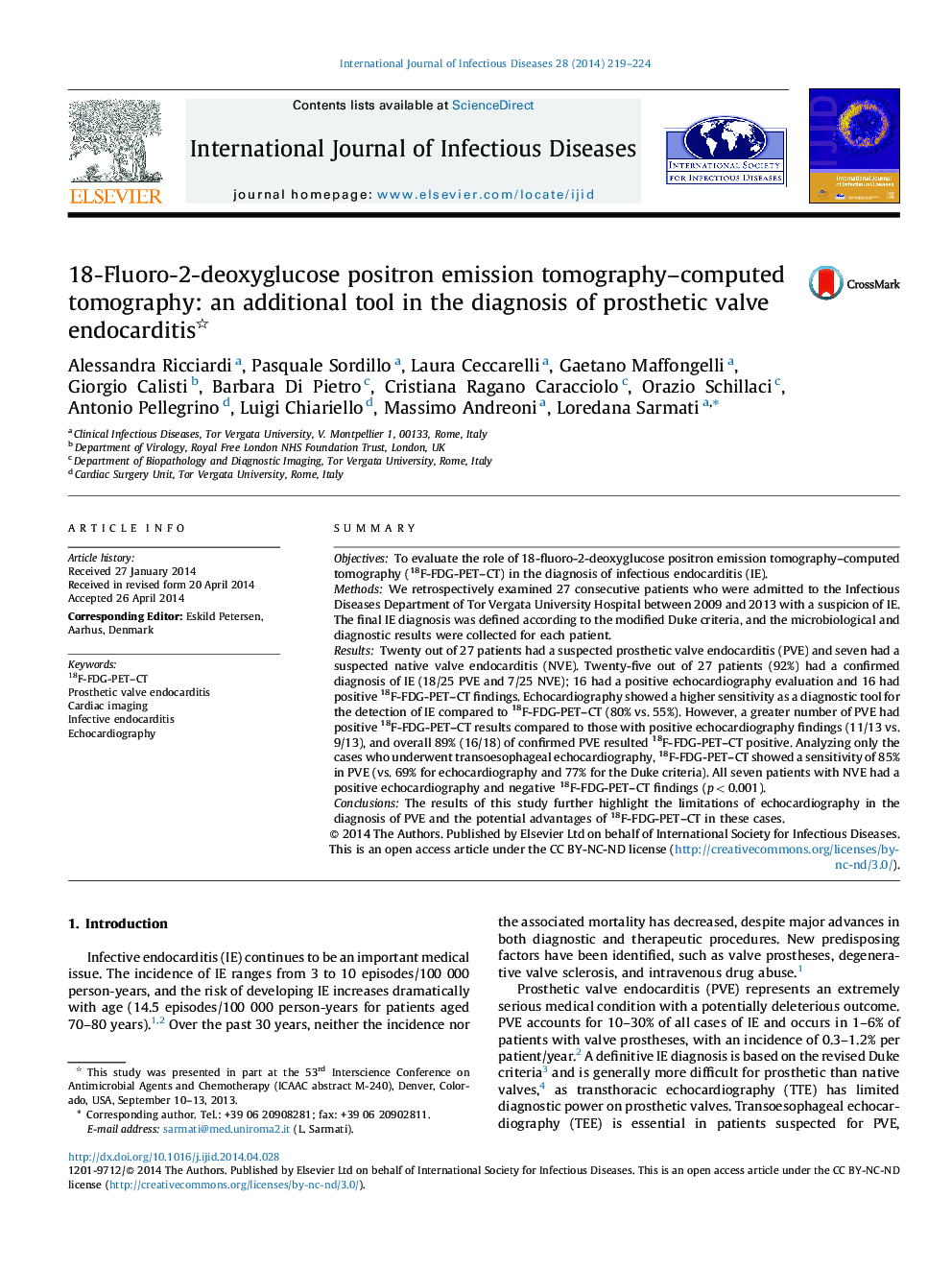| Article ID | Journal | Published Year | Pages | File Type |
|---|---|---|---|---|
| 3362414 | International Journal of Infectious Diseases | 2014 | 6 Pages |
SummaryObjectivesTo evaluate the role of 18-fluoro-2-deoxyglucose positron emission tomography–computed tomography (18F-FDG-PET–CT) in the diagnosis of infectious endocarditis (IE).MethodsWe retrospectively examined 27 consecutive patients who were admitted to the Infectious Diseases Department of Tor Vergata University Hospital between 2009 and 2013 with a suspicion of IE. The final IE diagnosis was defined according to the modified Duke criteria, and the microbiological and diagnostic results were collected for each patient.ResultsTwenty out of 27 patients had a suspected prosthetic valve endocarditis (PVE) and seven had a suspected native valve endocarditis (NVE). Twenty-five out of 27 patients (92%) had a confirmed diagnosis of IE (18/25 PVE and 7/25 NVE); 16 had a positive echocardiography evaluation and 16 had positive 18F-FDG-PET–CT findings. Echocardiography showed a higher sensitivity as a diagnostic tool for the detection of IE compared to 18F-FDG-PET–CT (80% vs. 55%). However, a greater number of PVE had positive 18F-FDG-PET–CT results compared to those with positive echocardiography findings (11/13 vs. 9/13), and overall 89% (16/18) of confirmed PVE resulted 18F-FDG-PET–CT positive. Analyzing only the cases who underwent transoesophageal echocardiography, 18F-FDG-PET–CT showed a sensitivity of 85% in PVE (vs. 69% for echocardiography and 77% for the Duke criteria). All seven patients with NVE had a positive echocardiography and negative 18F-FDG-PET–CT findings (p < 0.001).ConclusionsThe results of this study further highlight the limitations of echocardiography in the diagnosis of PVE and the potential advantages of 18F-FDG-PET–CT in these cases.
